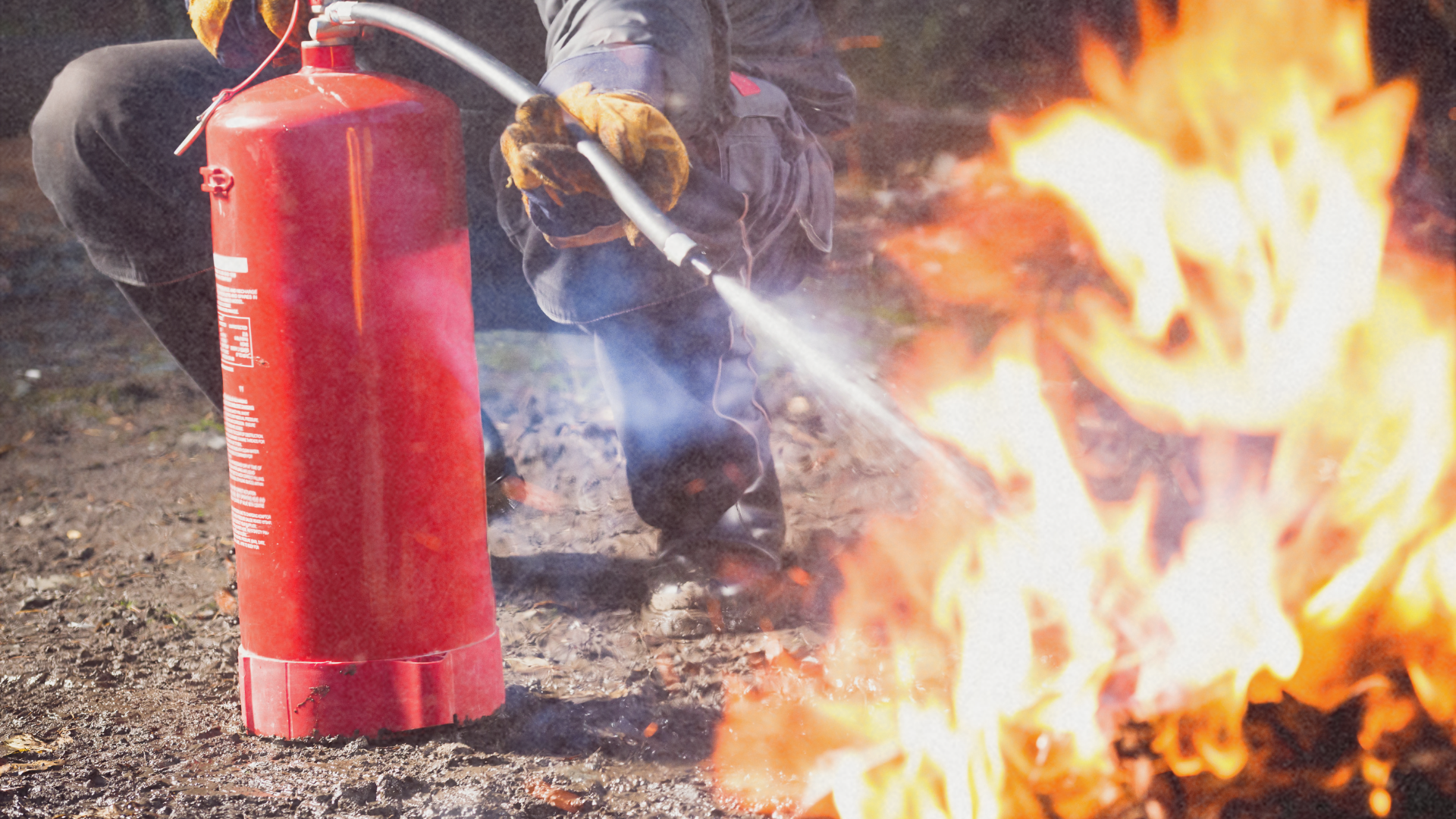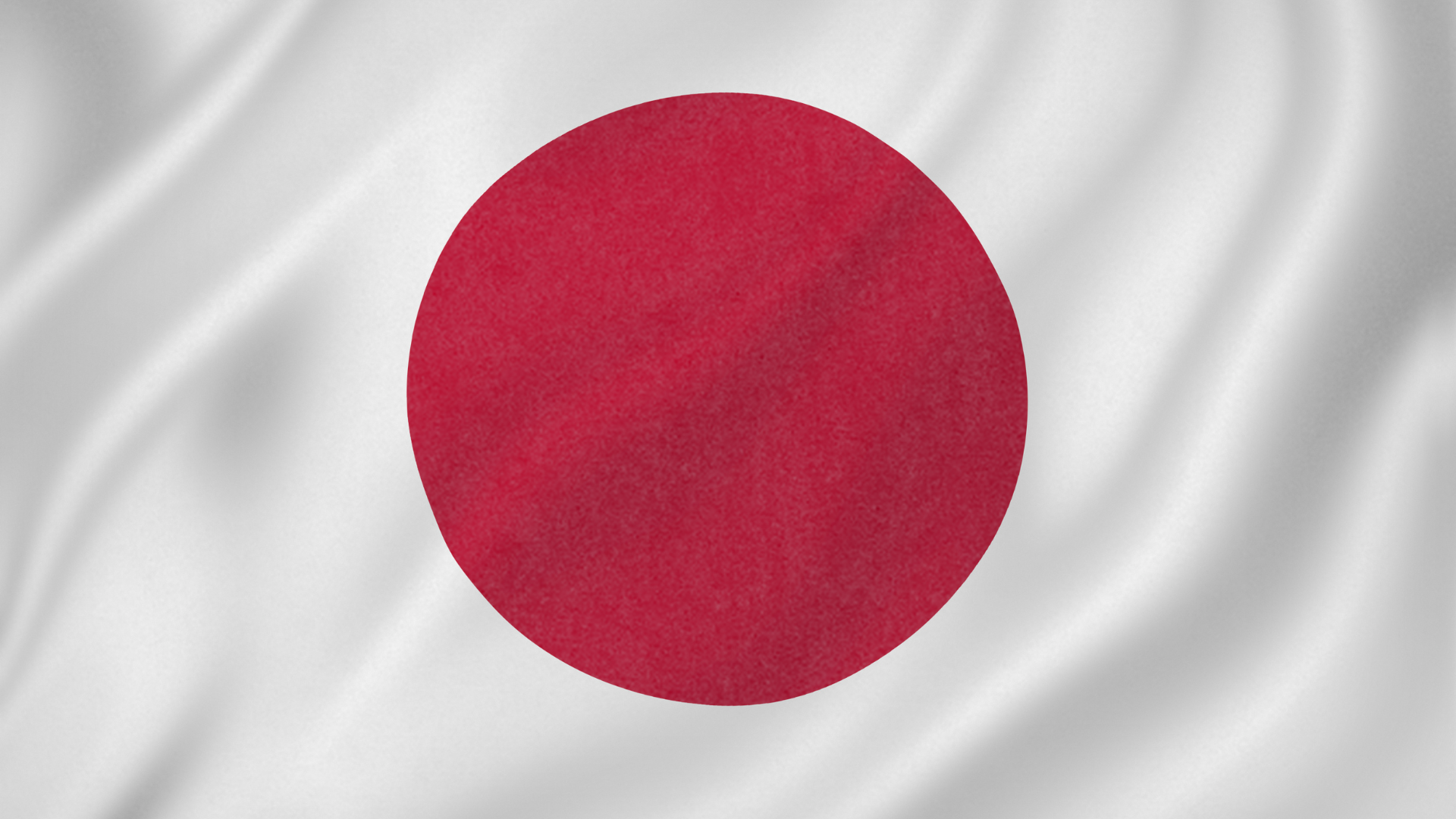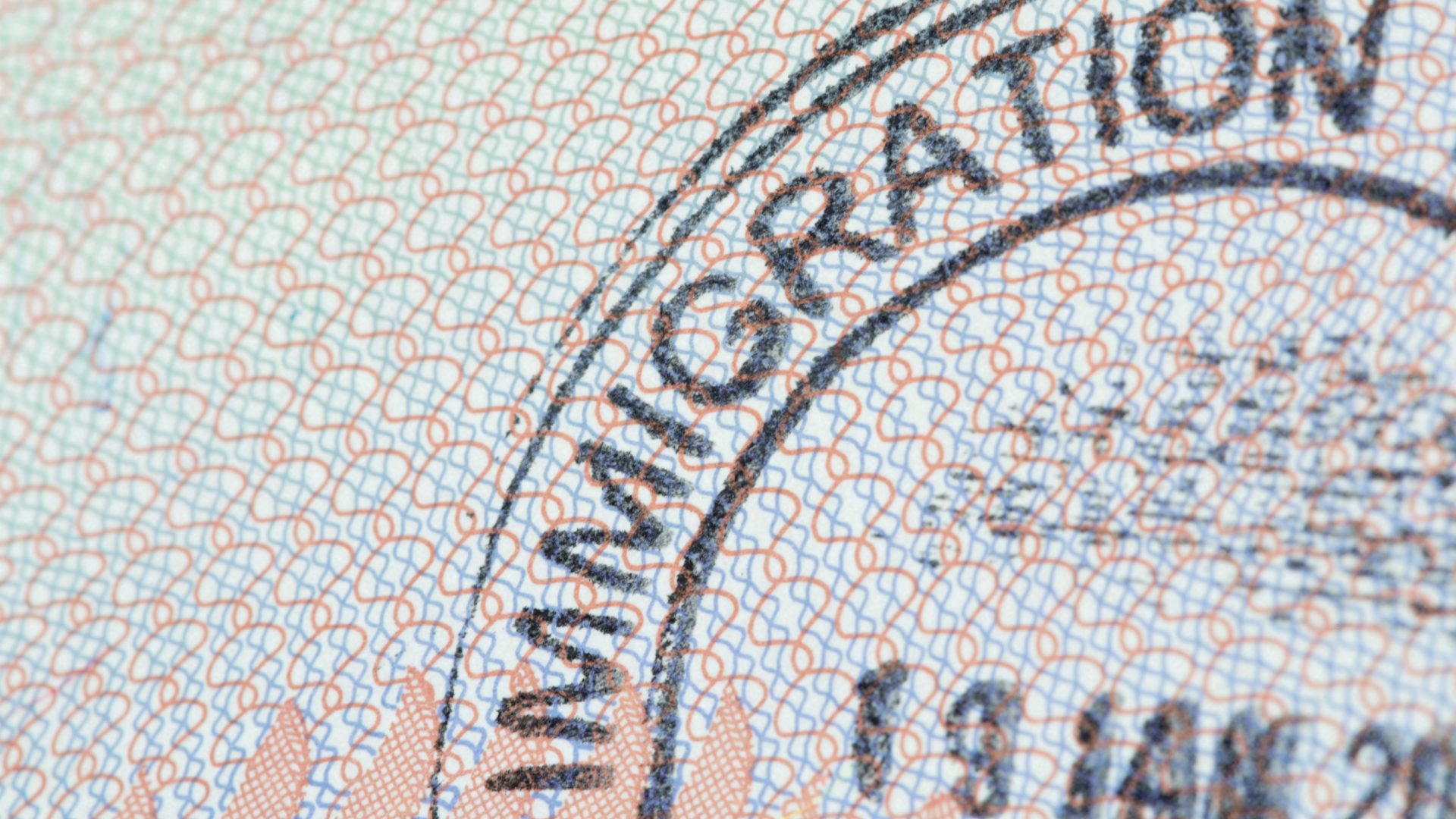The rainy season is upon us. After El Niño, we wonder, can La Niña be far behind? Recent memories of Typhoon Ondoy are still fresh in our minds and questions come to the surface—are we prepared? This is a deep personal question that haunts us all. We learned our lessons and realize that self-reliance is important now more than ever. The National Disaster Coordinating Council (NDCC) has announced that we are inside the window of probability for an earthquake and that there is a possibility of a 7.2 magnitude earthquake hitting us. They also admitted that our government does not have the resources to cope with large-scale disasters. We can understand this after Ondoy, or by calling to mind such incidents as the earthquake in Haiti.
Other questions arise. When will the “Big One” come? What is the probability that a disaster might take place in your locality? When would the next one happen? Will you be on your own? How long before the government might arrive to help you? Are you better off making other plans? How long must you survive? Do you have loved ones to care for? Do they have special needs? Is there a chance you might have to evacuate? Does your area flood? Do you need some kind of a boat, raft, or floatation device? What do you bring with you? Where do you go? What can you do to improve your situation? What can you do at the personal, family, and community level to survive?
We are all more aware after Ondoy. In the absence of adequate response capabilities from government, the bulk of the load for disaster response will fall on the private sector. They may be unorganized, mostly untrained and may find themselves alone in their efforts to cope with various contingencies. Be prepared, don’t expect help to arrive when you need it, it might be slow—very slow. When it comes to disaster preparedness, what are your strengths? What are your weaknesses? What skills do you need to train in? Where do you get training? Is there an individual or a group that you’d like to team up with in an emergency? How do you get word to them if you are in trouble? Is there a network you can plug into and count on? When should you start preparing? Is that time now?
Disasters destroy lives, families, and infrastructure, negatively impacting whole societies. Lives and livelihoods will be disrupted. They may have long-term effects on your community. Life will be difficult. You may see hardship and suffering around you. Help could take weeks to arrive. Proper response capability and preparedness are the keys to your survival.
It is best for us to be self-reliant and adopt a Survival Attitude. The time to prepare and team up with partners is now—before a disaster takes place. The worst time to scramble for solutions is during an emergency. For your own enlightened self-interest, start making personal, family, and community preparations now. It is a good time to talk with family and friends in your neighborhood. Disasters will always affect you locally and it will always be good to have friends to lend a helping hand. It is even better to plan and train with volunteers in your community, so that you have developed some kind of teamwork that can come into play when the chips are down. You must plan ahead or suffer the consequences from lack of action.
I recently finished a 3-day Level 1 training program on Disaster Response and Community Development with the International Disaster Response Network (IDRN) held at the PNP Training Center in Camp Crame in conjunction with the Humanitarian International Services Group (HISG). It was one of the best trainings I have had in a while, not only because of the timeliness of the training, but also because of the unique insight and experiences of HISG in global community development. Their Asset Based Community Development approach is very applicable to the Philippine scenario, and they are very aware of our culture and the Bayanihan Spirit of the Filipino.What is most unique about working with the IDRN and HISG is the global dimension of these organizations and the resources that they can bring down to the local level in an emergency. They utilize robust modern communications technology to secure important information from the field, then relay it to where it is needed most for accurate assessments to insure that the right resources are brought into play as quickly as possible. During a disaster, it is a good thing to know that you can count on the right kind of training and help from a global network. This means that needs pinpointed on the ground in an isolated barrio can be transmitted beyond boarders out to the IDRN, where solutions to those needs can be mobilized efficiently. Resources might come from neighboring countries in the form of manpower and materials, with follow-on logistical support from the international community.
The IDRN and HISG are able to do this efficiently through their expertise in gathering and disseminating information and helping to mobilize resources. This is done through a network with immediate connectivity for collaborative disaster response efforts. It is through this network of globally experienced professionals that they were able to develop and implement comprehensive and effective models for relief and development. Thus, the network is able to provide a solid and proven foundation for effective disaster response and sustainable community development with local partners in the Philippines.
Participating local organizations can map their assets for sustainable community development and disaster response through completion of an online capabilities survey. Interested participants are asked to identify which areas they are interested in focusing on or supporting, along with the nations or regions of focus which they would be interested in supporting relief and development operations. IDR Training was recently conducted at the PNP Training Center in Camp Crame to provide Filipinos with a better understanding of the overall process and opportunities related to relief and development work. Such training is held around the world and requests from interested parties can be forwarded to the HISG Training Director. Once approved, training will be jointly scheduled between HISG and the requesting local organization.
HISG and IDRN have a strong focus on the training and development of local units that will play very important roles in relief and development work. They are:
Rapid Assessment Teams
Their primary function is to perform assessments of the disaster, connect to local partners and authorities, and mainly gather accurate and timely information on the ground at the scene of a disaster. They are the critical link that initiates the flow of information to provide the proper resources and relief to a stricken community. They are fully self-contained with their own capabilities for communications, water, food, and shelter. They are capable of performing lifesaving efforts, but this is dependent on the situation and is more of a secondary mission.
Local Coordinating Unit
This vital element provides a forward coordination capability. They provide the Common Operating Picture (COP), coordinate with and support Rapid Assessment Team (RAT) Activities, coordinate for Arrival and Departure of IDRN Relief Teams and provide a specialized reporting capability. They are key to information gathering and dissemination efforts. They paint the common picture to synchronize operations and generate Spot Reports that contain what is called “Flash” Information and “Critical” Information. Their situation reports contain routine information pertinent to important service categories and essentially advise as to “Who is doing what and where.” They coordinate important positions or locations, assignments, common maps to be used in rescue and relief efforts, and function as the important communications hub on the ground for coordination with local partners, IDRN and HISG global network. They bring order to the chaos of a disaster
There are several stages in disaster response:
Stages of Disaster Response After Impact
1.) Rescue
•Immediate response to life threatening situations.
•First Aid Support.
•Medical transport.
•72-hour time frame.
2.) Assessment
•Assessment of long term requirements.
•72-hour time frame
•Pull Logistics with information from the field vs. Push Type from a distant HQ.
•4 Areas of Assessment
– Medical
– Logistics
– Communications
– Size & Scope of the Disaster
3.) Relief
•Address the urgent provision of resources to reduce the suffering of disaster victims.
4.) Recovery / Rehabilitation
•Community Development –
-A long-term process enabling community transformation.
-Improve and build the basic capabilities of the community.
-Empower communities to provide their own resources and be self-reliant.
-A constant and on-going challenge to find sustainable solutions in addressing concerns.
Disaster First Aid
This is a very important skill in a disaster because people are sure to get hurt. A loved one or a neighbor might be in dire need—you don’t want to just watch, in a state of helplessness. There are some serious concerns here. Dangerous situations might prevail, or people might behave in a desperate or irrational manner. Never put yourself in danger—if you get hurt or killed, you will not be able to help anyone. There is a right way and a wrong way to help people.
First aid training is vital, if you don’t have any background in this much-needed skill, it is a good time to seriously consider getting your training now. First aid training will cover the following:
•Airway
•Breathing
•Circulation
•Fractures
•Shock
•Environmental
Triage:
-Respiration
-Pulse
-Mental Alertness
Body Substance Isolation is important—use gloves!
Providing Proper Disaster Response Capabilities In Your Community
Establish local response teams / partners.
Put some good thought in who you would like to team up with or work with during a disaster. In doing so, make sure you consider certain skills, capabilities, equipment, or close proximity. Maybe they are your neighbors or friends. Are there certain skills that you would like to have as a group? Seriously consider what kind of training you would need to cope with disasters. This is all about people working together. Establish your Bayanihan Disaster Plan.
Identify local community assets.
You can only work with what you’ve got. Not all communities have the same resources in place. Some are better off, some are not so well equipped and need to work harder to prepare. This will directly impact the plans of your community for self-reliance and survival. Maximize the assets you have in place—it’s not what you’ve got, but what you can do with it that counts.
Compile your equipment needs list.
Are there things that you need to survive in a disaster situation? Do you have them? Where can you get them? Do you know how to use them? Do you need instruction? Seriously consider investments in equipment that your community might need in foreseeable emergencies. These might be for medical, fire, flood, earthquake, communications and community security. Typhoon Ondoy saw the emergence of Filipino ingenuity in the creation of improvised floatation devices of all types, some fashioned from water containers, tarps, and rope to rescue people stranded because of floods. Certain things will be worth their weight in gold. You know best what you will need in times of trouble. Plan ahead.
Standardize procedures.
There is a right way and a wrong way to do things. You will find that chaos is the norm during a disaster. People may be very disorganized and frantic or haphazard. Know what to do, get training, and practice diligently to prepare yourself. In an emergency, you may not rise to the challenge, but you will surely sink to the level of your training. That might be your key to survival.
Establish communications plan.
It is important to have a capability to communicate locally and to be able to reach out (the farther, the better) in a disaster scenario. Local capabilities are important because that is where reality is. All disasters are local. You must be able to coordinate efforts within your locality. People on the ground and at the scene will be able to give you the best and most accurate information that you will need to deal with any contingency. This critical information is vital to get the right kind of assistance or relief. You need to get this information out to those who can help you. This might be to a nearby friend or relative, a Local Government Unit, a Department of the National Government, or even to a global response network. You may find yourself cut off or isolated in a disaster. If you need help, but no one knows about it—will it ever arrive? Make sure your community has good communications capabilities.
Planning at the Personal and Family Level
Personal survival is a mental activity; crisis is inevitable in our times and it should be anticipated. If your mind is ready, you will know what to do. Situational awareness is very important, you must be keenly aware of the situation around you and you must be able to adjust as needed. You have God-given strengths and capabilities that you never realized you had, in an emergency; it is good to know these are available to you. Survival is one thing and we will all do the best we can, but to do it with grace and dignity is something that comes to those who are trained and prepared. We cannot say when the next big storm or earthquake might hit, but we can do our best to prepare.
How do we go about doing this? We should view disasters at the level of our immediate environment, because that is how they will affect us, and that will be the basis for our preparations. Your capability to survive a disaster is equivalent to the level at which you prepare for it. You should take a good look at your local community and define the disaster potential in your area. This will guide you as to how you should prepare. You should gather with community leaders and concerned residents to do your best to stay informed. At the very least, you can begin researching on the Internet as to the best and most current practices you can adopt for disaster preparedness. If you are serious at the personal or community level, you should get training.
Teamwork sets the baseline for disaster response. Who are the best people in your community that you would like to team up with in a disaster? Not everyone has the right mindset for this. Some community members will work like ants for the good of their local neighborhood, while others are like grasshoppers that do not have a care in the world for their fellowmen.
One type will be very important during times of calamities; the other will be ill-prepared or, worse yet, most likely become a burden or a victim. Pinpoint the best and most qualified people in your neighborhood then build your Disaster Response Team. Convince volunteers from your neighborhood to get First Aid Training as a start. Teach residents how to prepare at the individual and family level.
Family Concerns
A family should make plans for communications. One way is setting up meeting point(s) as well as evacuation contingency plans (Where do you go? What do you bring?). Most people will opt to stay put, this is called Shelter-In-Place (SIP). Should this be your primary plan, you should make all necessary home preparations concerning utilities, special needs of family members, and notifications that you might need to make to any family or friends that might seek you out. If things become unsafe and you must leave, you must make your Evacuation Plan and prepare a Go Bag (see side bar) for each family member.
Your plans should also cover the following concerns:
Communications are essential.
If you need help or have to help others, communication is the first step. I remember the days when I was involved in radio communications & civic action, electricity would usually be gone after storms and we operated off car batteries or hooked up base station antennas to our cars to stay on the air and relay important information. Here is a short list of things to keep in mind about the importance of communications.
•Lifeline to those who can help you.
•Don’t take it for granted.
•Cell Phone / text (with strong network area coverage in your area w/ optional solar charger)
•Contact List (have one written down in case you are using a phone that is not yours)
•Hand held radio(s)
•Satellite Phone (these are expensive, but they are gold in an emergency)
Establish a rendezvous location point.
It is quite possible that families or community members might get cut off during calamities. It might be physically impossible to travel safely because of floods or disrupted roads and bridges. Many of the things we take for granted might not be available to us and these changes might come about in a very abrupt manner. If you are separated from your family or network, agree on a safe rendezvous point where you can meet in an emergency. It might be prudent to identify two meeting points, one in your locality and one at a prearranged evacuation point that you should go to if the need arises. Sometimes, the most prudent thing to do might be to shelter-in-place with a friend or relative till after the calamity subsides; it may be very risky to travel when conditions are not safe. Plan these things out in advance.
Shelter-In-Place (SIP)
This means that you will “sit out the storm” where you are. Most families and individuals do this. This means that you will be prudent enough to make preparations outlined elsewhere in this article for yourself and for your family. You must have a home defense plan for the safety and security of all. You should designate a place in your home to function as a Safe Room in times of emergency. The family should secure themselves here if there are unwanted intruders or danger in the area. Appropriate security measures should be taken with respect to sturdy doors, locks, and defensive tools. There should be adequate ventilation and certain amenities needed for comfort during extended sheltering there. Food storage and supplies should be sufficient for all family members secured in the Safe Room. Lastly, this should be in a sound structure.
Disaster Priorities
1. Security
2. Water
3. First Aid
4. Shelter
5. Food
6. Clothing
7. Power
Water is Life
Water is essential and you will not last long without it. You can stockpile a considerable supply at home, but what happens when this runs out or you are forced to evacuate? You may have to get water from non-traditional sources. Water purification issues will arise depending on the nature and source of the water. Here is a short guide.
Kill Microbes
It is vital to stay healthy and you must make sure that there are no organisms in the water that can cause disease or harm you. You can do this by:
•Boiling (a rolling boil for at least 4 minutes).
•Ultraviolet light (technology allows us to kill harmful organisms with this type of radiation). It is also possible to purify water in plastic bottles on the roof of a shelter. Just remove the plastic wrapper so that the water inside the bottle can be exposed to direct sunlight for at least four hours.
•Chemical purification (tablets are probably the most practical and portable means).
Remove Contaminants
There might be particulate matter in the water. You can deal with the problem by using the following:
•Cloth strainer (pouring the water through straining media will leave particles behind).
•Ceramic filtering (certain water filters use very efficient ceramic type filters).
•Settling (you can put water in a large container, contaminants will settle on the bottom).
In an emergency, you may have to scavenge water from unconventional sources.
Safe Sources
•Water heater
•Canned goods
•Water drained from pipes
•Ice
Unsafe Sources
•Vehicle or home radiators
•Hot water boilers
•Swimming pools/spas
Evacuation
Should the situation become such that it is no longer safe to stay in place, your survival might entail moving out. This means evacuation. Consider non-conventional and sound structures to shelter in when you are on the move. These might include parking garages, office buildings, or school buildings. If you are forced to leave your dwelling, you must consider the following concerns.
•Evacuate in daylight if possible
•Choose best route
•Have alternate route(s)
•Keep moving
•Stay alert
•Be aware of your surroundings
•Move away from disturbances and trouble/danger
•Don’t leave vehicle/baggage unattended
•Stay on high ground
•Fuel availability concerns
•Half a tank of gas = empty,refuel now!
•Consider bridges/overpasses
•Tents if you must shelter in the open
•Go Bag for everyone
It is a good idea to invest in good footgear. In a disaster, debris might be all over the place. Floods might be prevalent. Moving might be difficult if mud is thick and flimsy footgear might be sucked right off your feet. There might be sharp objects in the debris that can cause cuts, wounds and infections. Good footgear might have such qualities as soles with good traction, rugged construction, good ventilation and drainage, ankle support, and use of modern materials that can withstand harsh environments. You might even want to consider a set of over-sized rubber boots to wear over your regular footgear. In a survival situation, protect your feet!
3 Survival Rules
•Relax
•Remember where you are
•Never give up
Survival of the fittest doesn’t mean physical fitness, it means mental fitness.
Theory of 10-80-10
In a disaster scenario, there will be various types of people. There will be some who will survive because they have the right mindset and level of preparation. There will be some who might become irrational and resort to desperate acts of predatory nature. The vast majority will probably be controlled by the events; they may become the victims of those who are violent. They will fall into these categories:
•10% Actively Surviving – They are prepared and know what they are doing.
•80% Statuesque – They are not prepared, & helpless.
•10% Dangerous – Irrational, reckless, violent, & predatory.
The 80% should recover from their situation by using the Law of Three
1.) Take three deep breaths
2.) Analyze the situation by asking 3 questions:
•What is happening
•What are my options?
•When do I take action?
3.) TAKE ACTION!
It is important to calm down, take stock of the situation, and weigh your options, then take the proper course of action. The number one rule is survival and you must ensure first and foremost your own personal safety, then the safety and security of your loved ones. If you do not help yourself first, you cannot help others. Some people might be desperate of irrational—avoid them. Keep the following thoughts in mind to guide you.
•If you don’t understand what is going on, back off until you do understand.
•Some situations are non-survivable. Think ahead. Stay out of those situations.
You will not survive:
•3 minutes without air.
•3 hours without shelter under extreme conditions.
•3 days without water.
•3 weeks without food.
•3 months without companionship or love.
•3 seconds without spirit and hope.
The above article has been abbreviated in the interest of keeping it brief and to the point. I hope that it will serve as a handy guide in your efforts to prepare yourself, your family and your community for the possibility of disasters.
Recommended reading: “How to Survive the End of the World as we Know It” (James Wesley Rawles); “Deep Survival” (Lawrence Gonzales); “The Survivors Club” (Ben Sherwood)






